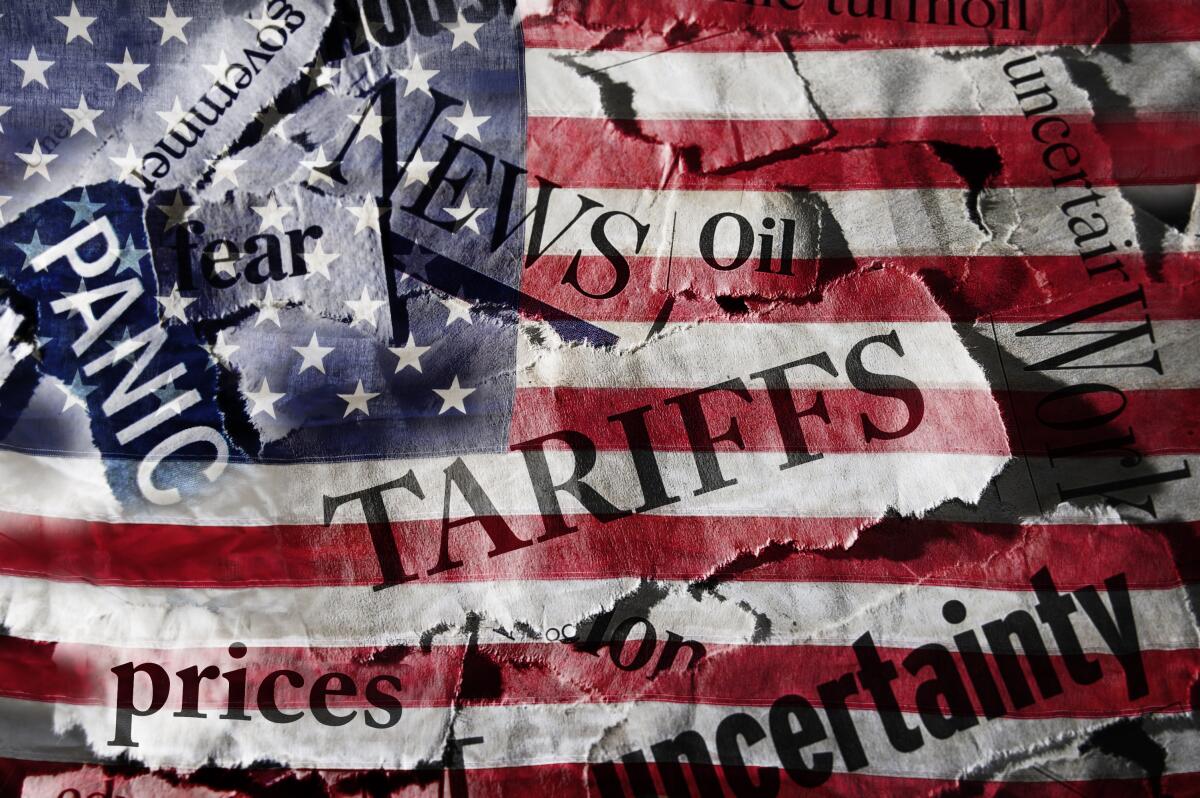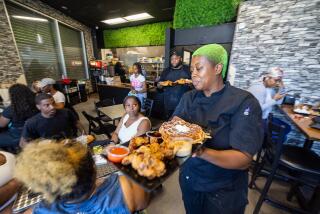More Americans are prepared for a recession, thanks to painful lessons of the last one

- Share via
DAYTONA BEACH, Fla. — When the Great Recession struck in 2007, business was so slow at the Dodge dealership here that Brett Woodruff and his fellow salesmen played football on the empty car lot. Woodruff lost his 3,300-square-foot home by a golf course, his marriage and a prized 2004 black Dodge Viper.
It wasn’t until after years of renting that Woodruff cautiously reentered the housing market, and even then with a home one-third the size and cost of his old one. He didn’t hesitate recently to use coupons to save a few bucks for drapery ropes. He’s squirreled away enough savings to sustain him for six to eight months — far more than the one month’s cushion he had in 2007 — and he keeps all of it in a savings account that pays next to nothing in interest.
“Sure, it costs me money,” said the 47-year-old. “But I also like the fact that I know for sure it’s there.”
What made the 2007-09 recession so deep and painful for Woodruff and other Americans was that they were ill-prepared for a downturn. Since then, the country has made a slow but steady recovery that is now the longest period of uninterrupted economic growth on record.
Today, with the global economy slowing and President Trump’s trade war with China roiling financial markets, fears have risen that the United States may be edging toward another economic cliff — one with potentially serious political consequences if it happens before the 2020 election.
This time, however, many Americans appear better positioned financially, and that could make the next recession far milder than the last one.
As Woodruff’s story illustrates, a key difference is that debt loads for most households remain relatively low compared with income. For the nation as a whole, the so-called debt-service burden — or the percent of after-tax income that households must devote to paying interest and principal every month — has dropped to about as low as it’s been in 40 years.
The reasons for the improvement include low interest rates and continued income gains, moderate as they’ve been. Also, with tighter underwriting standards, credit quality today is strong. Delinquencies on credit cards and other household liabilities are about 2.5%, compared with more than 8% at the height of the Great Recession, according to Moody’s Analytics.
As recently as 2010, 1 out of 4 homeowners nationwide owed more than their properties were worth. The percent of homeowners upside-down on their mortgages has since dropped to just 4%, according to CoreLogic. “There’s no sword hanging over our heads,” said Sean Snaith, an economist at the University of Central Florida in Orlando.
People are saving more, too, thanks partly to the 2018 tax cut. The personal saving rate — the share of after-tax income that isn’t spent — has been hovering around 8% since early last year, about double the rate in the years leading up to the last recession, Federal Reserve data show. And those 55 years and older have been socking away more than 20% in recent quarters.
In theory, that means that a new recession may not trigger the drastic plunge in consumer spending that occurred last time.
“It should make it less likely [that we] go into recession, and if we go into recession, it’ll be less severe,” said Mark Zandi, chief economist at Moody’s Analytics.
Yet there are still potential risks. Households in the bottom third of the income spectrum have barely recouped what their incomes were in 2006 before the recession. In terms of wealth, the bottom half held only 5.8% of all assets early this year, down from 7.2% in 2010, meaning they will have less to weather a downturn.
Similarly, many companies are on shaky ground because they have gone deeply in debt. Borrowing by nonfinancial firms in the United States has risen to a record high. And most worrisome are so-called leveraged loans, which are less regulated and have been issued to companies with weaker credit ratings.
Already corporate debt as a share of U.S. economic output is close to 50%. That’s one reason that Dan North, chief economist at Euler Hermes North America, a credit-risk insurance firm, expects a recession in the first half of next year. “Too much easy money for too long always leads to tears,” he said.
Just as Woodruff has worked to better prepare for the next downturn, so has the central Florida community where he lives. It’s part of the so-called I-4 corridor that runs eastward from Orlando to Deltona and Daytona Beach, the two largest cities in Volusia County, which, with neighboring Flagler County, makes up a distinct metro area.
Like much of the rest of the state, the region relies heavily on tourism and construction, which are in turn highly dependent on the health of the overall economy.

Officials in Flagler and Volusia have been trying to diversify their economies. And they’ve had some success recruiting distribution and manufacturing as well as such widely sought-after high-tech enterprises such as Coastal Cloud, a fast-growing firm started in 2012 that provides cloud technology services. Since the recession, schools have built in vocational and career programs that start as early as kindergarten.
As in many parts of the country, middle-income jobs here remain scarce. The result is that many young families, college graduates included, can’t afford to buy a home.
Today the median home price in Flagler County is just about back to the peak of $259,950 it reached in December 2005. In the wake of the recession, the median price had fallen nearly 60% to a low of $106,000 in 2012, making this county and its largest city, Palm Coast, the poster child of the real estate bust. Some of Palm Coast’s golf courses lost 90% of their value.
While it took much of a decade, the area has clawed back up and onto more solid ground. Between 2009 and 2011, more than half of the houses sold in Flagler County were in foreclosure and other distressed sales, said Toby Tobin, a real estate consultant. That’s now down to 2%.
Today, the speculators are gone, and there are more homeowners in Palm Coast like Brian and Terra Gannuscio, Southern California natives who fled in 2013 after losing their first home in the recession. They had bought a condo in Temecula in 2006 for $350,000 and three years later managed to negotiate a short sale with the lender for half that amount.
When Coastal Cloud in Palm Coast offered Brian a job in the summer of 2013, the couple loaded up their two toddlers and pair of pit bulls and drove across the country for the warmer beach waters in Florida.
They started out carefully, buying a $200,000 starter home next to an abandoned golf course. They obtained a mortgage that let them pay down principal instead of the financially risky interest-only loan they had had on their Temecula condo.
The Gannuscios skimped and saved, and in 2015 moved up to a four-bedroom house costing twice as much. It sits along a canal that weaves through this master-planned community. Their pontoon boat is in the water out front.
The couple uses about 20% of their income — Terra works part time as a hairdresser — to service their mortgage, at times making extra payments on principal. In Temecula, about 40% of their income went to make interest-only payments.
The Gannuscios have little additional debt, and typically pay off balances on credit cards every month. During those heady Southern California bubble years, the Gannuscios lived paycheck to paycheck. They had little in emergency funds. Today, he said, they have enough savings to last at least six months.
Brian, 35, is still worried about the economy, especially the trade war, but not so about his family: “We would be totally OK if we were in a recession.”
More to Read
Inside the business of entertainment
The Wide Shot brings you news, analysis and insights on everything from streaming wars to production — and what it all means for the future.
You may occasionally receive promotional content from the Los Angeles Times.











